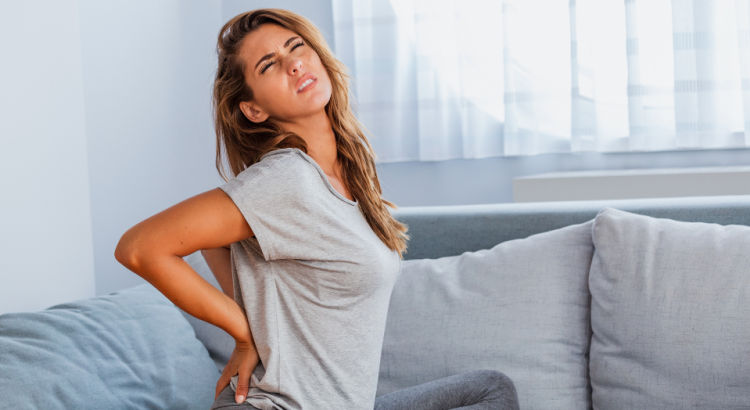
Back ache ? What are the different lower back pains? When do you come to see your osteopath for your back?
The lower Back pain
The lumbago
Lumbago can originate from the psoas-iliac muscle. This muscle (among others) is involved in lumbago. You bend down to pick up an object and your back is blocked. This muscle has been strained too much before, it has remained tight, and lifting us up suddenly has stretched it too hard and cold. Lumbago is often called acute low back pain, is a sprained disc.
We also usually call this type of muscle pain “backache” or “backache” even if the renal organ itself is not affected in any way.
Symptom: A painful contraction of the muscles in the lumbar vertebrae (the lower back).
Cause: A crack in the intervertebral disc and the nucleus moves and engulfs the crack.
The nucleus, however, did not come out of the ring: It is not a herniated disc (there is no nerve pinching) but a sprained disc which is accompanied by a contracture muscular.
Unlike sciatica, lumbago is not characterized by pain in the buttock or leg.
The cruralgia
Cruralgia: Irritation of the root of the L3 and L4 nerve. Cause: A crack of the intervertebral disc and compression of the crural or also called femoral nerve. Symptom: Pain in the back and / or thigh and / or calf: Cruralgie L3: lower back, in front of the thigh, in front of the knee.Cruralgie L4: lower back, in front of the thigh, inside of the calf.
The sciatica
The cause of sciatica can be from the piriformis or pyramidal muscle.This muscle can cause pain that resembles sciatica. The sciatic nerve passes into the pyramidal muscle. Thus, too much and lasting contraction of this muscle can cause sciatica-like pain, but it is not damage to the sciatic nerve. Sciatica: Irritation of the L5 and S1 nerve root. Cause: A crack in the intervertebral disc and compression of a sciatic nerve. Symptom: Pain in the back and / or buttock and / or thigh and / or calf and / or foot and / or toe: – L5 sciatica: lower back, buttock, outer thigh, outside of the calf, top of the foot, big toe. Sciatica S1: lower back, buttock, behind the thigh, behind the calf, under the foot, little toe. Unlike lumbago, sciatica is characterized by pain in the buttock or down the leg.
The Maigne syndrome
Maigne syndrome is also called dorso-lumbar hinge syndrome. It designates a set of pains due to irritation of nerves in the dorsolumbar area (transition zone between the upper part and the lower part of the back). Maigne syndrome is more specifically the consequence of irritation of the nerves emerging at the level of the D12 (12th thoracic vertebra) and L1 (1st lumbar vertebra) vertebrae.
Causes: Maigne syndrome is the result of irritation of the nerves in the dorsolumbar area, that is, the junction between the dorsal part of the spine and the lumbar part. This area is particularly stressed because the dorsal column is very mobile unlike the lumbar spine which has little rotation. Irritation of the nerves in the dorso-lumbar area can especially occur in the following cases:
Minor intervertebral disturbance in the posterior part of the joint.
Posterior articular osteoarthritis.
Disc pathology affecting the intervertebral discs.
Symptoms: Maigne syndrome is characterized by a set of pains projected in the lower back. We talk about projected pain because it does not occur at the level of irritation of the nerves but at the level of the regions innervated by these nerves. In the majority of cases, the areas affected are the lower lumbar region, the upper part of the buttocks, the sacrum, the crease of the groin, the labia majora or scrotum, the trochanteric region (hip) and the lateral aspect of the breast. thigh.
The risk factors for low back pain
The bad postures
Lay back: bulging stomach (the core of the disc moves forward). Lean forward: round back (disc core moves back). Bending over to tie your shoe laces: avoid bending the trunk. Sit with your back arched forward. Turn on the side: avoid twisting (rotation) of the back. Turn on your side while leaning forward (shoulders shifted to the side in relation to the hips).
The good postures
Bend the knees while squatting always keeping the back straight. Keep your back straight but not too straight: respect the natural curves of the back. Favor the port of the backpack (the straps on both shoulders).

